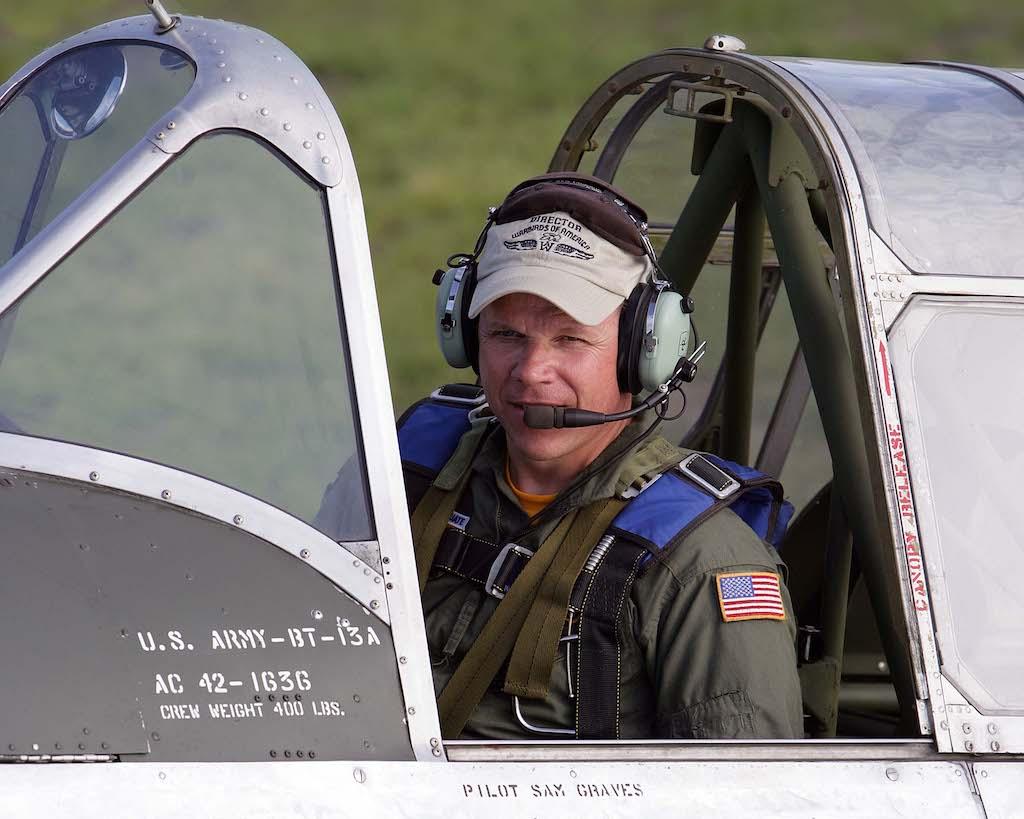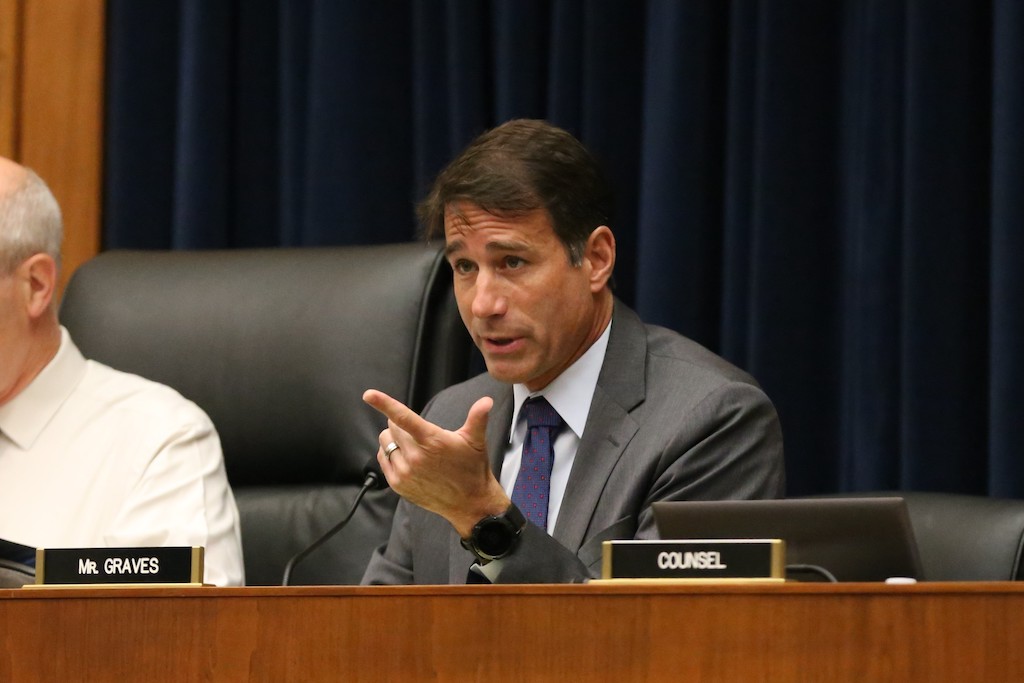
U.S. Rep. Sam Graves now leads the House Transportation and Infrastructure Committee.
Streamlining FAA certification and approval processes, cultivating a future workforce, meeting environmental challenges and setting the stage for new aircraft entrants are foremost among business aviation legislative priorities for the 118th Congress.
GA associations would like to extend and expand incentives to produce sustainable aviation fuel (SAF) contained in the 2022 Inflation Reduction Act that Congress approved last August, possibly through FAA reauthorization or other legislation. The act provides a blenders tax credit through January 2025 to incentivize SAF production, followed by a Clean Fuel Production Credit that expires in December 2027. Though “thrilled” with the incentive, NATA had asked for a 10-year credit and is seeking guidance from the Internal Revenue Service on how aviation businesses can take advantage of it, Karen Huggard, vice president of government affairs, says.
The Inflation Reduction Act also provides $300 million to establish a competitive grant program for projects that demonstrate low-emission aviation technologies or produce, transport and store SAF, with the SAF component receiving more than 70% of funding. “There may be an interest in expanding that program through reauthorization,” GAMA’s Vice President of Government Affairs Paul Feldman says. Language enabling the secretary of Transportation to make discretionary grants to airports for infrastructure needed to distribute, blend or store SAF is contained in the 2023 omnibus appropriations bill that Congress approved in December.
The omnibus spending package also boosted funding for the Eliminate Aviation Gasoline Lead Emissions (EAGLE) program, a joint initiative the FAA and industry associations announced in February 2022 to phase out the use of leaded avgas in piston-engine aircraft by 2030. At the time of its unveiling, there was no mention of dedicated funding for EAGLE; the omnibus bill provides $10 million to test unleaded fuels, associations say. The FAA already had budgeted $12 million for fuels testing in general in 2023.
The EAGLE program could be reinforced when the Biden administration submits its next budget request for federal agencies in February. “We’ll know [in February] when the administration releases its proposed budget about what additional resources it may ask for,” Feldman says. “We’re of the mind right now that the EAGLE initiative needs to continue to develop as people are getting together and thinking about what could really make a difference—is there an infrastructure need, is there more testing needed? We’ll be in a position to take those [proposals] and talk to [Congress] about that.”
Advanced Air Mobility

Associations welcomed passage of the Advanced Air Mobility (AAM) Coordination and Leadership Act that Biden signed into law last October. The act will create a federal interagency working group on AAM led by the Transportation Department. But associations are holding the FAA to account for modifying the certification basis of AAM vehicles, seemingly in midstream of their development.
The agency caught the industry by surprise when it announced the regulatory policy shift in May 2022, soon after Billy Nolen took over as acting administrator. Rather than evaluating new electric vertical takeoff and landing (eVTOL) aircraft under existing Part 23 regulations for airplanes, the FAA informed AAM developers that it will require them to certify their vehicles as powered-lift aircraft under Part 21.17(b) “special class” rules.
The shift requires that the FAA now issue a Special Federal Aviation Regulation (SFAR) to recognize the new class of powered-lift aircraft within its pilot training and operating regulations—something it has committed to doing within two years. Language in the 2023 omnibus appropriations bill reiterated that commitment, requiring the agency to complete the SFAR by Dec. 31, 2024.
“They made some promises that they were going to deliver certain things by the end of 2024,” Feldman says. “In [FAA] reauthorization, we would be looking at things that would help facilitate that commitment actually being realized.”
Associations also applauded inclusion in the 2023 omnibus appropriations bill of the Advanced Aviation Infrastructure Modernization (AAIM) Act, which was introduced in the previous Congress, authorizing the FAA to award $25 million in grants over two years to assist state, local and tribal governments in developing new AAM infrastructure.
“The AAIM Act outlines a comprehensive set of considerations for infrastructure planning that will enable communities to maximize the societal benefits that AAM will offer,” says Helicopter Association International President James Viola. “States and local governments across the country realize that AAM has the potential to create 300,000 jobs by 2035, and they are eager to make the investments necessary to support new vertical flight technology.”
NBAA and members of its AAM Roundtable support an expansion of the Alternative Fuel Vehicle Refueling Property Tax Credit—which allows a 30% tax credit for the cost of electric vehicle charging and hydrogen refueling stations—to cover a charging infrastructure for electric aviation.
“There is an enormous amount of investment being made to try to bring these products to the market,” CEO Ed Bolen told senators. “Understanding a clear pathway to a type certificate, production certificate, op specs, and being able to begin the operations—it’s very important for us to know what to expect as we prepare.”
A Standalone GA Title

The incoming 118th Congress presents the GA industry with a new balance of powers among parties, with Republicans taking control of the House and its committees and Democrats still controlling the Senate.
U.S. Rep. Sam Graves, who had served as the ranking Republican member of the House Transportation & Infrastructure (T&I) Committee, assumed the chairman’s gavel previously held by Rep. Peter DeFazio, the long-serving Oregon Democrat who has retired from Congress. Rep. Garret Graves (R-Louisiana), who is not related to Sam Graves, was the presumptive chairman of the Aviation Subcommittee.
U.S. Rep. Rick Larsen (D-Washington) became the ranking Democrat on the T&I Committee, winning out over the more senior Eleanor Holmes Norton, Washington, D.C.’s delegate to Congress, to succeed DeFazio. Larsen previously chaired the Aviation Subcommittee.
Sens. Maria Cantwell (D-Washington) and Roger Wicker (R-Mississippi) carried over to the 118th Congress as chairperson and ranking member, respectively, of the Senate Commerce, Science and Transportation Committee.
Sam Graves, a prominent general aviation pilot and advocate, has spoken of adding a first stand-alone title, or subject heading, for general aviation in the FAA reauthorization bill, raising expectations that GA will have a higher profile relative to other segments of aviation. He has also said he would prioritize the federal permitting process and aviation workforce rules in the new legislation, Roll Call has reported.
“From our parochial interest, we have a vantage point that the top Republican on the T&I Committee is a general aviation pilot,” said Jim Coon, Aircraft Owners and Pilots Association (AOPA) senior vice president of government affairs. “He knows what pilots are facing every day and he has indicated that he would like to have a GA title in the FAA reauthorization bill. I don’t think it’s ever been done before so we’re very encouraged by that.”
Both Graves’s were among 200 House Republicans and six Democrats who voted against the 2021 Bipartisan Infrastructure Law, and Sam Graves has promised to exercise aggressive oversight of its implementation. The two lawmakers were among 200 Republicans and one Democrat who voted “no” on the 2023 omnibus appropriations bill, with another Democrat voting “present.”
Notably, Sam Graves and Rep. Scott Franklin (R-Florida), a former U.S. Navy pilot, speaking during a panel discussion at the NBAA-BACE conference in October 2022, were skeptical of the FAA and industry’s EAGLE program goal of phasing out leaded avgas by 2030. “I don’t want to force it,” Graves said of the unleaded fuel initiative. “I worry about the legacy engines that are out there, too.”
Stable And Predictable Funding
AOPA’s Coon was among panelists who spoke during the Air Traffic Control Association (ATCA) Global conference in Washington in November. The annual event, focused on air traffic control policy and technology, provided another occasion for industry experts to call out the need for more stable and predictable, as well as additional, funding for the FAA. Aviation consultant Donna McLean, a former Transportation Department budget official who serves on the FAA Management Advisory Council, said the agency’s Facilities & Equipment account of roughly $3 billion has remained static for the past 15 years.
The FAA’s fiscal 2023 budget request for F&E includes $536.3 million to improve ATC facilities, of which $481.3 million will be used to chip away at a $5.1 billion backlog in sustainment needs.
“The remaining $55 million, in concert with funding for the replacement of facilities in the Bipartisan Infrastructure Law, will support replacement of aging facilities in poor condition and experiencing operational issues,” the FAA says. “Most air traffic control facilities are in poor condition,” it reports, with enroute centers ranging in age from 56-62 years and some terminal facilities as old as 79 years.
Paul Rinaldi, past president of the National Air Traffic Controllers Association, delivered a blistering critique of the situation.
“As air traffic controllers walk into this room and see Raytheon’s MARS (Multi-platform Application Re-hosting Solution), Harris’ equipment and space-based ADS-B, you’re scratching your head, knowing you’re never going to see that in your career,” Rinaldi said. “The system is broken. The way we bring equipment online—it takes too long. When we bring it online, it’s already antiquated. [W]e’re not able to meet the challenges of the future.”
FAA Is On The Plate For A New Congress, Part 1: https://aviationweek.com/business-aviation/safety-ops-regulation/faa-pl…



